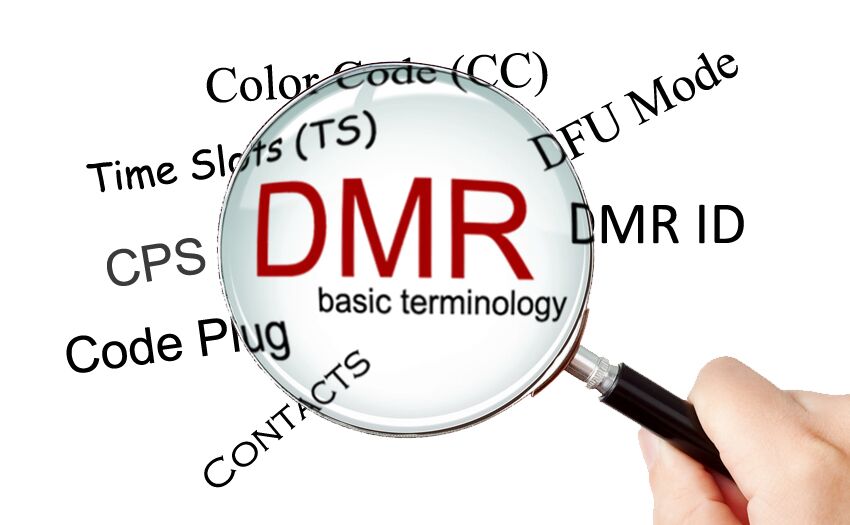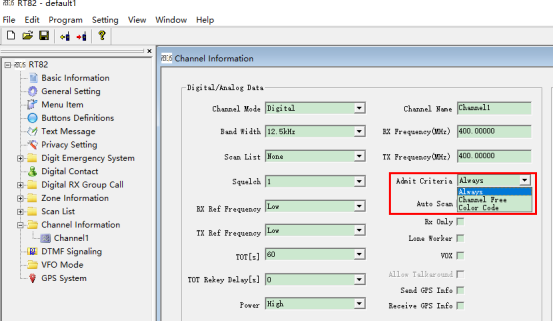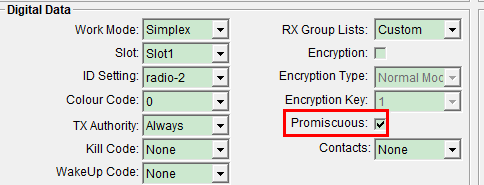+86 15093323284 hams@ailunce.com
The basic terminology of DMR Radio

Nowadays,DMR radios become very popular not only in amateur market but also business market. But There are various terms more specific to DMR that could cause some confusion.Today let’s learn them together.
Code Plug – This is the programming file that contains all the radio settings, repeater information, talk groups, contacts, and other stuff to make the radio work. Some code plugs can be generated from CSV (Microsoft Excel) files which save having to type in a lot of the information. In today’s DMR radio market, there are several different code plug format like HD1 is .tw file, RT82 and RT3S are .rdt file.
CPS (Customer Programming Software) – This is used to read and write code plugs to/from the radio. Some CPS are better setup than others which makes a difference as to how easy it is to work on the code plug.
DFU Mode (Device Firmware Upgrade) – When doing a radio firmware update, the radio needs to be in DFU mode otherwise it could render the radio temporarily unusable until reloaded. Different radios have different ways of getting into DFU mode and therefore it’s best to find out first. It usually involves pressing one or two buttons whilst turning the radio on.
For example, on Ailunce HD1, press PTT and upside key enter DFU mode.
but on RT82, press PTT and the top alarm key enter DFU mode.
Admit Criteria – This is a setting in the CPS that decides whether to allow your transmission to go out on a repeater thus helping to reduce “keying over” another user if the TimeSlot is busy. Unfortunately it does not work 100% on all radios which can lead to you being forced to leave a gap before being able to transmit.


Channel – This is an basic containing details of a simplex channel or repeater – frequency,color code,time slot etc. For DMR repeaters, you add a channel for each talk group on that repeater. On some radios, they provide more than 1000 channels to satisfied users' needs.
Color Code (CC) – This is the DMR equivalent of a CTCSS tone using numbers from 0 to 15. A radio which has been programmed with colour code 1 will not be able to transmit on a repeater configured with colour code 2 and so forth. A radio can be configured with multiple colour codes - one for each channel. A repeater can only be configured with one colour code.
Contacts – This is user data against a DMR ID – your name, call sign and location. You can obtain this information to add into your code plug so that you can see peoples details on the screen otherwise you would just see their DMR ID. The number of contacts you can add to a code plug varies by radio. Most radios upload this to a different memory in the radio via a CSV file and can hold up to 200 000 contacts, like Ailunce HD1. (there are around 151616 contacts as at early January 2020).
DMR ID – All users on the DMR networks require a DMR ID number which has their details attached to it. This is added into the code plug and also hotspots.


Time Slots (TS) – This allows the repeater to operate as two repeaters in one box thus reducing the bandwidth requirement on DMR. Various talk groups are assigned to a specific time slot.
Talk Groups (TG) – These are loaded into the contacts section of the code plug. They cover local, regional, national and international links much like a telephone exchange directing your QSO to a different location or number of repeaters depending on which you use. There are many talkgroups on Brandmeister network, such as TG91 covers all repeaters on the network worldwide.
Rx Only – This feature prevents you from transmitting on a channel – it’s ideal if you add in the PMR446 or other channels that you can legally monitor but not transmit on.
Nuisance Delete – This feature (not available on all radios) allows you to temporarily mute a repeater/channel in the scan list.
Promiscuous Mode – This feature is not available on all radios. It allows the radio to pick up activity on any active talk group as long as you have the same frequency and colour code in the channel. This feature is available on Ailunce HD1, Retevis RT82, Retevis RT3S. But on RT82 and RT3S, they called” Group call match, and private call match.




Resource:dmrguideuk













